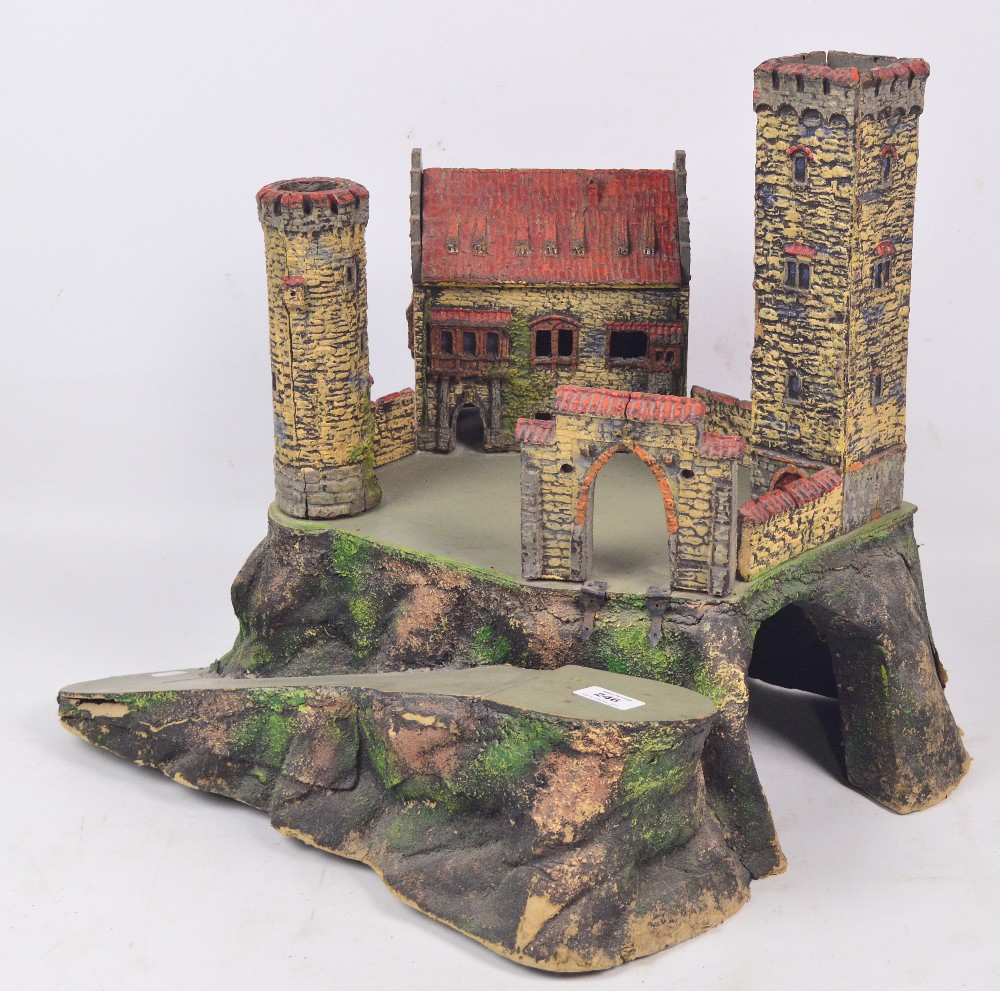Elastolin had an extensive line of toy forts/castles it developed during the interwar period which they produced up until 1941 or 1942, than resumed production following the war. The prewar toys were manufactured of a fibrous composite material; after the war Elastolin moved to an extruded/formed plastic. During the 1950s, the range was expanded to include HO or OO scale versions.
Here's an example of a composite Elastolin castle toy which included a tunnel (not all versions had tunnels running through the base):

We used this version as the basis for a remake. It's missing a few bits, but provides a good sense of what the components and structural scale is. The Elastolin version is basically the base with a number of components that are arranged to form the castle. We built our interpretation in two sections: (1) the tunnel base and (2) the castle structure on a separate base.
Construction of the base and tunnel was pretty straightforward using traditional model railroad techniques. We used papier-mâché to cover it, not plaster-cloth, as we thought this was something often used by the various toy manufacturers for such things during the prewar period. I hadn't done any papier-mâché since high school and had forgotten a number of its characteristics, one being its tendency to shrink as it dried. This resulted in the underlying ribs becoming visible in a few places, but no worries. The papier-mâché comprised torn up paper grocery bags and diluted white glue.
Nearly all of the materials used for construction, with the exception of the drawbridge hinge, a small bit of chain (leftover from a Christmas "garden" project), and a couple bottles of acrylic craft paint, were either scraps from the workshop or bits found for free. Cereal boxes, USPS shipping boxes, single-faced corrugated from liquor store signage/displays, and a few scraps of O-scale brick-paper were all used. Here's a montage of construction at various stages:

The dimensions are approximately 16 inches end-to-end, and roughly 18 inches tall. I intentionally compressed the design a bit while making it taller and a bit closer to O-scale. I freely admit to making a number of design gaffes along the way resulting in "Oh, that's why they did that" moments.
I can't stress enough, Howard (sawdust43) blazed the trail on this with a version of his own. He included a number of features in his that I omitted, including some very professionally designed and installed LED lighting. I can't say I would have ever attempted this without seeing his first, together with the words of encouragement and the hints he provided along the way. Perhaps the best result was I got a new friend out of the process.
That's about it. Should make a nice backdrop for a few European clockworks I have. Hopefully I won't inadvertently put my foot through the side of it before then.
PD




